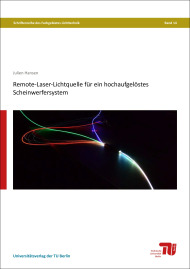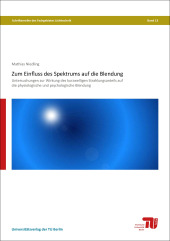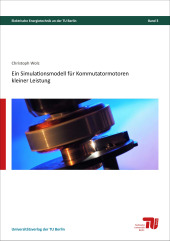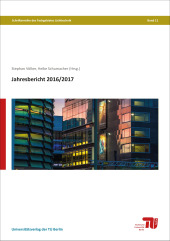Remote-Laser-Lichtquelle für ein hochaufgelöstes Scheinwerfersystem

Format: 14,8 x 21,0 cm
Publishing year: 2019
The available constuctional space for automotive headlamps is limited. Therefore it would be beneficial to have a decoupled and centralized light source. The aim of this work was to use the advantages of laser radiation, in order to realize an efficient separation of the light source from the high resolution head lamp system using glass fibers. There are two approaches to realize the Remote-Laser-Light Source, which show a different suitability for an implementation in headlamps due to their current state of research.
In the first approach a Pr:YLF solid state laser was developed, which emits the three primary colors red, green and blue out of one resonator setup, in order to generate a permitted white light for automotive headlamps by additive color mixing. The blue spectral component is provided by the non-absorbed pump light. A two-in-one resonator is built up for the simultaneous stimulated emission of red and green, which separates the both beam paths using a beam splitting mirror. The gain of both emission lines gets adjusted by inducing losses to the red wavelength region until a simultaneous emission of red and green starts. Both stimulated emission are showing a competitive relation, whereas this stimulated polychromatic emission is limited in time. The solution is a pulsed pump light source, which allows a stablized emission of red and green out of one resonator.
Another approach deals with red, green and blue laser diodes that are coupled into a Nx1 fiber coupling element. The N input fibers are combined to a single output fiber, where a white light impression arises for an appropriate ratio of these spectral components due to additive color mixing. Two generations of this Remote-Laser-Light Source are introduced, whereas the first setup emits a luminous flux of 1429 lm and the second setup emits up to 13880 lm at the fiber output. In order to use this light source in a high resolution headlamp system, an illumination path consisting out of cylindrical microlens-arrays is used to project the emitted laser radiation on a DMD-Chip. A further improvement is provided by using a Freeform-Facet-Reflector, by which the illumination path could be reduced to a single surface.
A proof of principle of the polychromatic solid state laser was demonstrated, with future work required for increasing the emitted radiant flux for lighting applications. A high development effort is needed for this approach in order to get applied in automotive headlamps. The second approach shows a good suitability for an application in a high resolution headlamp system. Due to the high luminous flux there is the possibility to increase the field of view on the street in comparison to current DMD-headlamp systems. Therefore this light source offers the potential to realize all light functions adaptive for any situation out of one headlamp module.



